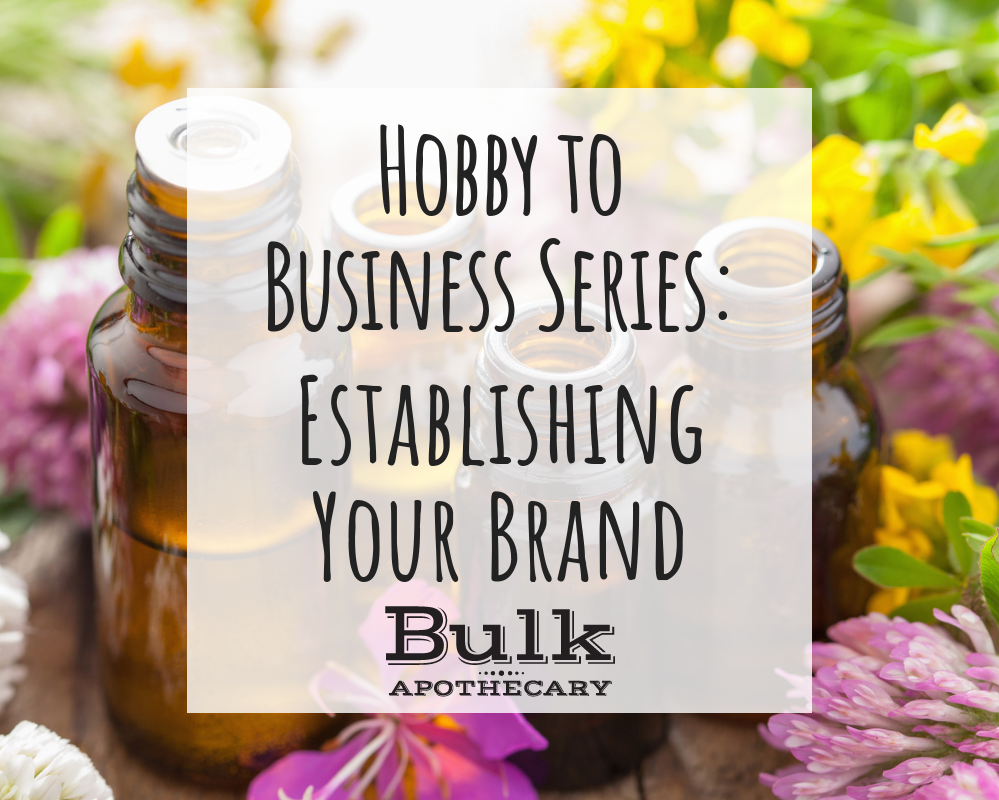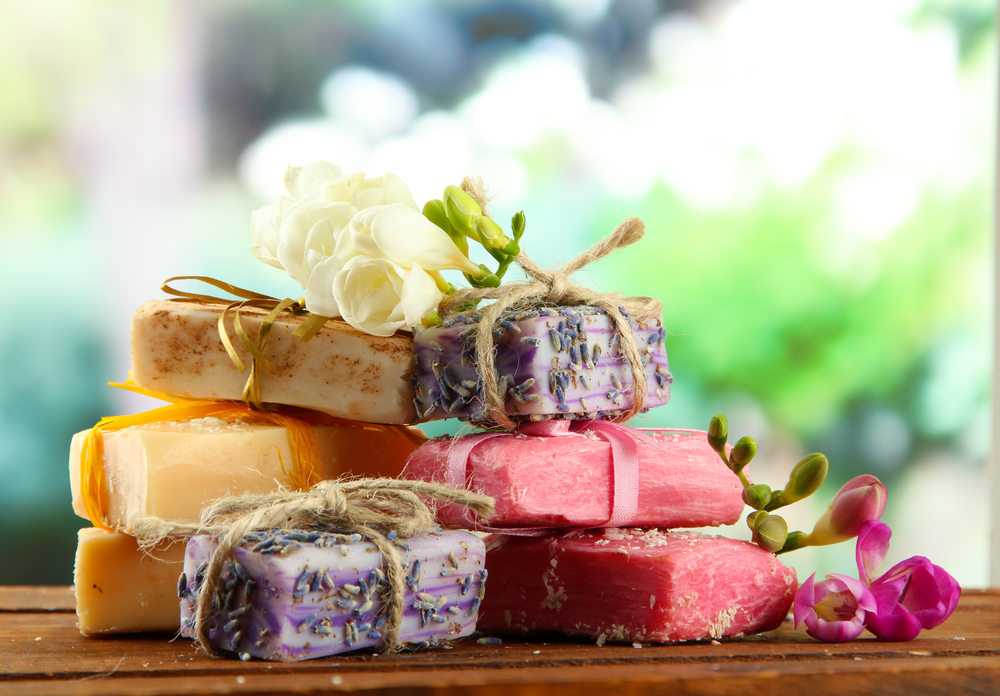Over the last few weeks, we’ve explored the first steps of turning a hobby into a business. With products developed and numbers crunched it’s time to define your brand identity. Get your notebooks out because there is plenty of research and pondering to be done before you offer your product. How you brand your company will play a key role in determining your success as a small business. It’s time to think about what makes your product special and why someone should buy it. Your brand is the best way to show the world why they need what you have. We’ll walk you through the key aspects of developing a brand.
Define Your Target Market
The word “targeting” tends to have a negative connotation, but when it comes to business, it’s imperative to really dive into exactly who you want your customer base to be. By learning the needs and desires of your potential market, you will be able to cater your business to a specific demographic. This will help you concentrate your efforts to customers who actually want what you are selling. The following are just some of the factors to take into consideration about your target demographic: age, gender, spending habits, location, special interests. This is just a short list of different ways to define your customer but taking the time to understand who will be buying your product will help you make the best-informed decisions about where and how to sell your product.
Another important factor you should consider is the spending habits of your potential customers. Do you intend to sell your product (let’s say it’s soap, of course) as an aesthetically pleasing high-end luxury soap at a higher price? How about selling your colorless, unscented soap at a more affordable cost with minimal packaging? These two bars of soap will likely be purchased by customers for different reasons .and different expectations about how much it should cost.
In your mind’s eye, picture yourself at your craft fair booth, at the counter of your storefront, or watching sales pour in from your online shop. Ideally, who is patronizing your business? What is important to them? How is your product improving their daily life? How will your overall image as a business attract people to you and your products? Another practical angle to take is this: who do I want out to be out there purchasing and advocating for my product?
Define Your Mission
Having a well-defined mission will help you in branding your small business because it will help you remain focused on why you started your business in the first place. A mission gives your business purpose. What makes your brand unique and what is the “why” behind your business? What kind of values do you want to share with your customer base? What do you stand for? Why should they buy from you?
Do you sell soaps made with only the finest oils, such as argan oil, perhaps infused with silk for that extra luxurious touch? Is your lineup vegan and free of synthetic ingredients? Are your melt and pour soaps shaped like animals and geared toward children with their bubblegum and fruity fragrances?
Shared values are the most important part of having a solid mission. People will always gravitate towards what they identify with. Maybe I want that silk and Argan luxury soap because I just turned 30 and I’m freaking out about how my skin will look in the next ten years. Someone who purchases this product probably values the importance of skincare. Maybe they’re like me and want to improve their skin routine before it’s too late, or another person could have a medical condition like eczema and needs those skin-nourishing oils. Either way, the consistent value here is skincare. For a company like this, do you think they would attract more customers with a colorful display or perhaps a more subtle, simplistic layout?
There are a lot of people that would be interested in vegan and synthetic-free soap! This is especially true with more people moving towards more plant-based living. With the knowledge and research attainable at the tips of our fingers these days, it’s not hard for us to learn how commercially produced soap really isn’t the greatest stuff to be putting on our skin. Maybe your mission is to educate those who are unaware and introduce them to the world of all-natural skin care with no animal-derived ingredients.
Kids love fun soap! Perhaps your children or grandchildren inspired you to launch your business. You could build value into your company by showcasing a cool soap that makes bathtime fun. After all, you were inspired by those little ones, so obviously family is important to you and probably to your customers, as well!
Define Your Business Identity
By defining your mission and values, you can make informed choices about how your business will be perceived. We all have a favorite brand we rely on whether it’s a store you always buy jeans from or a restaurant your go to regularly. Take a moment to think about why you like them and consider how you feel when you think about them. I buy my jeans from the same store not just because I like how they fit but I know they are good quality. I am happy to spend my money with that brand because I trust their products. Once you find a brand you like and trust choosing them when you need something new becomes automatic. Your business identity is what attracts people to your products. A great product without a brand is like a black and white photo of a rainbow. How will anyone know there is something special there?
This is your small business; your vision coming to life. You are the voice behind your brand. What key messages do you want to communicate about your brand? Who are you? What do you have to offer? More importantly, why should people buy it?
Consistency in your aesthetics, mission and values will provide an opportunity for you to connect with your customer beyond a simple transaction. You are responsible for being your brand’s biggest advocate.
Research Your Competition
One of your goals should always be to differentiate yourself from your competition. Back to our example of soap. Take a look at what makes other brands in your industry stand out. Is it their consistent packaging? Perhaps their labels are all uniformly black and white but the soap bars themselves are bright, neon colors. Something like this would make their brand particularly easy to spot among the competition.
Are they offering something that you do not? Let’s say your line consists of cold process soap and lotion bars fragranced with only essential oils. Your brightly-colored competitor sells bath bombs to accompany their radiant soap.
If you are making cold process soap and lotion bars, I am going to predict that your customers may like a similar product to go with your line, such as a bath tea or soak since that lends itself to your all-natural values. Perhaps you could sell a kit containing a variety of your products to appeal to a different niche of the market you share with your competition.
It’s always a smart move to check out your competition. However, I personally feel it is important to not look at them as competition. I’m a firm believer that we all have a lot to learn and by opening ourselves to seeing what others have to offer. This can give you insight into what’s selling vs. what’s not, as well as the different price points and range of products other businesses offer.
Making Your Brand Come to Life
Your branding should always have a cohesive look and feel with your product lineup, company mission and business identity. Make your brand recognizable! You want to have consistency in your image with the same color scheme, font, and logo placement.
If you are going to take your business seriously, you have to be willing to invest time and money into the branding process, especially as far as your visual representation is concerned. Creating a logo is fun and exciting but can pose as a difficult task, simply because there can only be one logo for your business. Don’t be afraid to ask for advice. This will be your constant visual identity and should remain consistent on all your products, advertisements and content.
Take your time with the process of physically branding your business and your product! The process can take weeks, months, even years. Don’t rush it! You deserve the best for yourself – after all, you’ve come this far and beautiful physical materials like labels, displays and advertisements should be used to compliment your product lineup. Don’t think you have to do this alone. You may know established business owners who have already been through this process. Even if they are in a completely different industry the principles of creating a brand are the same.
Sure, you may be in a hurry to get your product out there and available for purchase, but the work you do now will set the tone for how your business will launch. Do you really want those patrons to remember you by some good-smelling soap with a sloppy label that doesn’t even have your company name on it for the customer to order more? Scientific studies have shown that visual information is processed through the brain almost instantly – you want to make sure you leave your customers with a good first impression of your business and your product. Your overall image and product will be what earns you repeat customers in the future.
In Conclusion
Establishing your brand entails so much more than coming up with a cool logo and neatly packaged product. Successful branding encompasses a variety of areas including your website, packaging, business cards, social media presence, and online advertising.
So, who would want to buy your product? I can’t answer that for you but I hope this week’s article has helped you develop a clearer vision of how your brand will look to the rest of the world. Once you develop your brand the decisions about how to package and label your product, where to sell and how to market will become much more clear.




Will refined Shea butter make my lip balms gritty? Like the unrefined does! If so how do I get rid of the gritty texture?
The refined shouldn’t give the gritty texture, since it’s refined.
If your Shea butter gets too hot it will become gritty, it can be remelted and smooth back out. Just watch the temperature and length of time it is hot when you melt/remelt. Double boiler method works well for melting and not getting it too hot just watch the temperature. Do not use a microwave to melt it is hard to control the temperature.